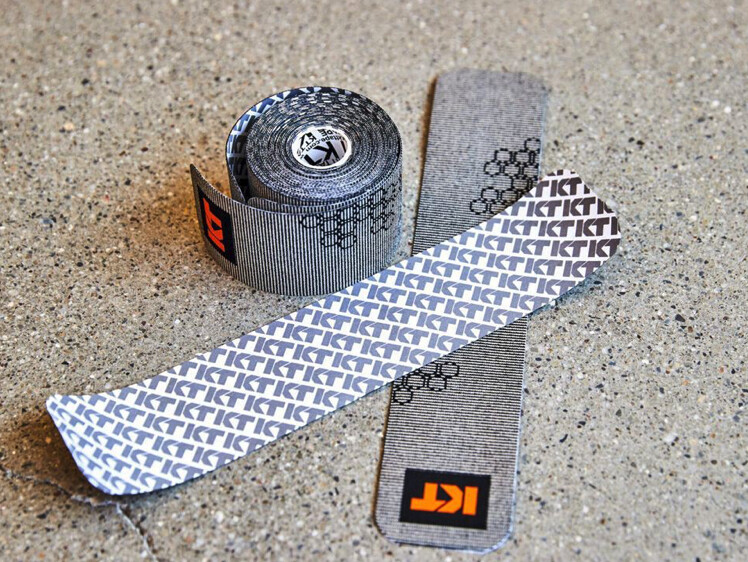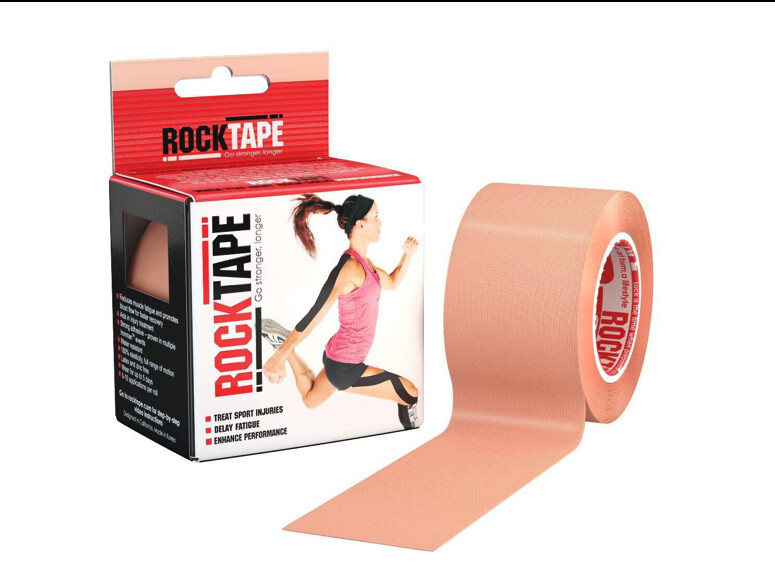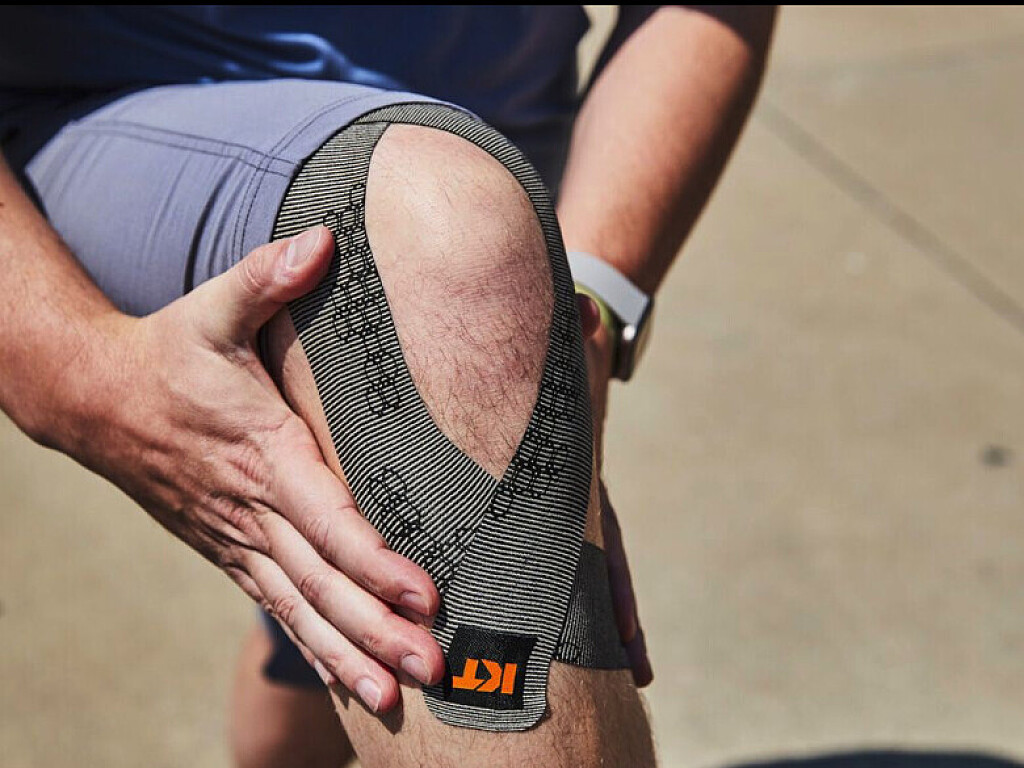Running News Daily
Running News Daily is edited by Bob Anderson. Send your news items to bob@mybestruns.com Advertising opportunities available. Train the Kenyan Way at KATA Kenya and Portugal owned and operated by Bob Anderson. Be sure to catch our movie A Long Run the movie KATA Running Camps and KATA Potato Farms - 31 now open in Kenya! https://kata.ke/
Index to Daily Posts · Sign Up For Updates · Run The World Feed
These Expert-Recommended Kinesiology Tapes Could Help Your Running Recovery
To overcome a nagging running injury, just tape yourself back together.
Kinesiology tape, created by Japanese chiropractor Dr. Kenzo Kase in 1973, is a stretchy therapeutic tape made of mostly cotton that uses medical-grade acrylic adhesive to stick to your skin. When stretched tight, the tape pulls the skin away from the tissues beneath, reducing the pressure against the underlying tissues. In theory, this promotes circulation and the removal of waste products through lymphatic drainage.


Our experts said that some runners use kinesiology tape to reduce pain. “Once you reduce the perception of pain, you can get an increase in range of motion and an increase in muscle activation,” says Dr. Karena Wu, clinical director of ActiveCare Physical Therapy. Because nerve fibers associated with touch stimulation are larger than pain fibers, the brain receives the touch stimulation faster, reducing your perception of the pain.
The tape can also inhibit certain muscles or facilitate others. Instead of immobilizing muscles and joints like athletic tape, kinesiology tape is stretchy, and runners can use that elasticity to adopt a stronger, healthier stride. “People who have shoulder or trap pain as they’re running tend to hike their shoulders up toward their ears,” says Denise Smith, PT and owner of Smith Physical Therapy + Running Academy. “We’ll tape down their shoulders. As their shoulder creeps up as they fatigue, that triggers a sensation of the tape pulling on the skin, so they relax their shoulders.”
Scientific research confirms some of kinesiology tape’s purported benefits. A 2022 meta-analysis of eight studies conducted by the University of Padova in Italy found that kinesiology tape was able to improve gait function, range of motion, and muscle activation in athletes. However, a 2020 study out of Leeds Beckett University in England found that the tape made no difference in cutaneous blood flow, calling into question some of the tape’s purported benefits for muscle soreness and recovery.
Even without hard science behind all of its claimed benefits, kinesiology tape has been widely adopted by athletes and trainers. At less than $20 per roll on average, it’s a low-cost, low-risk way to at least try to optimize your training regimen.
What to Consider When Picking Out Kinesiology TapeAllergies and Sensitivities
Most kinesiology tapes are made from hypoallergenic materials like cotton and nylon, and specifically avoid using those that commonly trigger allergies, such as latex. Even so, make sure to check the composition of any tape before applying it if you have a skin allergy.
Even if you don’t have a specific, intense allergy, some adhesives may irritate sensitive skin. Several brands offer “gentle” tapes with weaker adhesives that are less likely to cause redness or swelling.
Separately, keep in mind that removing kinesiology tape will likely affect your skin, since the adhesive is very strong. Make sure to read the removal instructions before yanking the tape off—some manufacturers recommend using baby oil to break down the adhesive before removal.
Body Hair
You don’t need to shave your body hair to use kinesiology tape, but you should know that too much body hair will defeat even the stickiest adhesives. If your tape is coming off more quickly than it should on a hairy area, shaving down to a quarter-inch or less may improve the tape’s staying power.
Positioning
Some areas of your body are easier to tape yourself than others, so consider where and how you’ll apply the tape before you buy. Ideally, you should consult a doctor or physical therapist before using kinesiology tape so they can show how to properly cut and apply it in a way that will enhance your performance, instead of harming it. “It is very important to know the anatomy where you are trying to apply the tape,” said Bruce Allen, DC, a chiropractor and certified kinesiology tape practitioner at the San Diego Running Institute. “If taped incorrectly, you could give yourself a separate injury.”
We also have a guide to using kinesiology tape, with expert instructions for taping yourself up to deal with a handful of common running injuries, including plantar fasciitis and shin splints.
If you’re concerned about mis-taping, we recommend looking for pre-cut kinesiology tape strips and patterns, which are made to support specific trouble spots, including knees, shoulders, and the lower back.
How We Selected the Best Kinesiology Tapes
To choose the best kinesiology tape, we consulted eight physical therapists, trainers, and running coaches to find out which ones they use and recommend to their athletes. We also gleaned insight from popular running forums like Slowtwitch, impressions from additional experts, and hundreds of customer reviews at major retailers, such as Amazon and Walmart.Vikash Sharma DPT, OCS, COMT of Perfect Stride Physical Therapy in New York City is a doctor of physical therapy and a certified running coach with the Road Runners Club of America and USA Track and Field. An avid runner, Sharma competes in road races around the Northeast.
Karena Wu, DPT, OCS, COMT, CSCS, CKPT, CPI, FAAOMPT is the owner and clinical director of ActiveCare Physical Therapy in New York and Mumbai. Wu is also the former director of education for Spidertech Kinesiology Tape.
Bruce Allen, DC, CKTP is a doctor of chiropractic medicine and certified kinesiology tape practitioner based in San Diego. Allen received his Bachelor of Science in Kinesiology, specializing in kinesiotherapy, from San Diego State University.
Denise Smith, PT is the owner of Smith Physical Therapy + Running Academy in the Chicago suburbs. A certified running technique specialist, Smith has consulted for the Russian olympic and national triathlon teams and travels the country educating runners on proper form using the Pose Method.
Robyn Pester of Robyn Pester Physical Therapy in Eugene, Oregon has been the lead PT for the 2022 World Athletics Championships, the Olympic Track & Field Trials in 2016 and 2020, and other high-end local track meets. Her manual therapy skills have developed over a 30-year career that has helped hundreds of clients return to active lifestyles.
Ryan Sweeney, DPT earned a doctorate in physical therapy at Duke University in 2013 and now works as an orthopedic clinical specialist and muscle activation technique specialist at Specialists in Sports and Orthopedic Rehabilitation in Overland Park, Kansas.
Matt Silver, DPT at Alpha Project Phyzio and Performance and a certified running gait analyst, helps injured runners regain their stride with athlete-focused physical therapy.
Peter Dills, DPT is the clinical director of Therapeutic Associates Physical Therapy in North Portland, Oregon. A certified therapeutic pain specialist and manual therapy specialist, Dills is particularly passionate about treating runners, especially foot and ankle disorders.
Dan Roe, author of this piece, is a former Runner’s World test manager and a former Division I distance runner at the University of Missouri. Kinesiology tape is a component of many top athletes’ training regimens, and a crucial aid for all kinds of runners who want to relieve soreness and remain cognizant of their form. Kinesiology tape mimics the elasticity of skin and lifts your skin away from tissues beneath, creating space that may help relieve joint pain, improve circulation, stabilize muscles, and reduce muscle soreness. Physical therapists also use it to help runners correct bad habits by helping them focus on activating muscles they may be underutilizing.
At the same time, it’s not a panacea for muscular health. In fact, it isn’t for everyone. We’re here to help you figure out whether kinesiology tape can help you support your muscles, improve circulation or prevent injury. We’ll also point you toward the best kinesiology tapes you can buy right now, from KT and other brands, based on expert advice from physical therapists who recommend the tape to their athletes.Who should avoid using kinesiology tape?
You should avoid kinesiology tape if you have a condition where more blood flow would be bad—deep vein thrombosis, diabetes and active cancers are among conditions that have excluded people from participating in kinesiology tape research. Also avoid taping over open wounds due to the risk of an infection.
If you’re unsure how your skin will react to an acrylic-based adhesive, or any of the components in a specific tape, test it first by applying an inch-long strip and waiting a few minutes to see how you react.
How long should I leave kinesiology tape on?
According to our experts, you should leave your KT tape on until it starts to slide or fall off. “The tape is meant to be a sensory stimuli so it is meant to be worn for the length of the activity and even afterwards,” said Wu. “In rehabilitation, it should be used for a few weeks in order to retrain or support or inhibit tissues during the recovery process.”
In most cases, a piece of tape should last for a few days, up to a week. Most of these tapes are water-resistant so you will be able to shower after a run while wearing your tape, but it will likely weaken the adhesive.
How do I prepare my skin before applying KT tape?
Our experts recommend applying rubbing alcohol to the area to remove natural oils before taping up. Make sure the skin is not red or irritated before putting it on, especially if you are reapplying to a recently taped area. “You never want to take the top layer of skin off or irritate the skin or else you cannot re-tape until the skin has calmed down,” Wu said.
How do I remove KT tape?
Dills advises his clients to remove the tape in the shower using warm, soapy water. To avoid leaving a residue, “don’t pull the tape straight away from your skin,” Dills said. “Gently peel it back a little at a time.” If your tape does leave some adhesive behind, Smith recommends starting with soapy water and a sponge or scrub brush, and graduating to an adhesive remover pad for persistent adhesives.
by DAN ROE Runners World
Login to leave a comment




